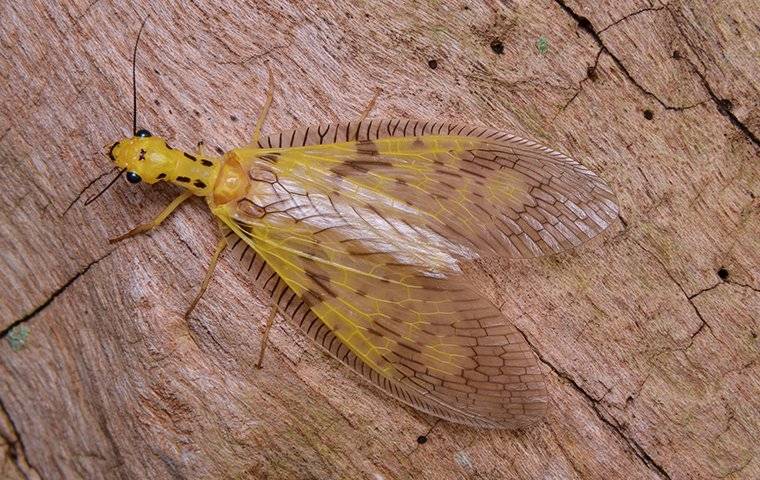
Dobsonfly
Description
The eastern dobsonfly, Corydalus cornutus (Linnaeus), is one of our biggest non-lepidopteran creepy crawlies. Its hatchlings, known as hellgrammites, are the top invertebrate predators in rough streams where they happen. Grown-up male dobsonflies are especially stupendous in light of their substantial sickle-molded mandibles (jaws).

There is a sum of thirty types of Corydalus (Contreras-Ramos 1997), generally from South America. Notwithstanding the eastern dobsonfly, Corydalus cornutus, there are three dobsonflies of the variety Corydalus in the western U.S.
For straightforwardness, the expression “dobsonfly” all through the rest of this production will allude toward the eastern dobsonfly, Corydalus cornutus.
The Dobsonfly can be as large as 3 inches and is light brown in shading. Dobsonflies are critical amphibian creepy crawlies that live in quick-moving streams.
The grown-ups are one of the biggest bugs in the U.S., and the males have huge mandibles up to 1-inch or more long.
Grown-ups are pulled into open-air lights on structures close conduits in this manner provoking interest and worry by mortgage holders finding at least one dobsonflies on the patio or deck. Dobsonflies, nonetheless, are not hazardous and don’t bite.
Life Cycle
Eggs
Dobsonfly eggs are dim, round and hollow and somewhat less than 1.5 mm long and 0.5 mm in width. They are laid in bunches (around 2 cm in distance across) with a normal of roughly 1,000 eggs/group (Baker and Neunzig 1968, Mangan 1992.). The eggs are masterminded in three layers, and the egg mass is secured with a reasonable liquid by a brushing movement of the tip of the female’s stomach area. The reasonable liquid dries to a white shading. Externally, the egg masses take after substantial winged animal droppings.
Hatchling
Dobsonfly hatchlings (75 to 90 mm long) are light darker and obscured by a covering of dim dark colored microspines (Neunzig and Baker 1991). The thoracic sections are secured with solidified, dark tergites (dorsal plates). Stomach portions 1 through 8 have sidelong material fibers which capacity to shield them from each other and from other little predators (Neunzig and Baker 1991), and fragments 1 through 7 each has a couple of ventro-horizontal tufts of tracheal gills that ingest broke up oxygen (Barclay et al. 2005, Hoover et al. 1988). Notwithstanding the tracheal gills, hatchlings have spiracles enabling them to inhale both all through the water. There are two prolegs at the tip of the mid-region – each with a dorsal fiber and a couple of terminal snares to assist the hatchlings stay themselves to the substrate. The mandibles are effective and intensely sclerotized.
Pupae
Dobsonfly pupae are exarate (the creating wings, legs, receiving wires and mouthparts are connected just at their proximal finishes) and yellow-orange in shading with darker splotches on the dorsum of the midriff. They are secured with moment setae. Male pupae have a little tubercle on the sternum of the prothorax and have somewhat bigger mandibles and more extensive head containers than females, (Mangan 1994), however, the mandibles of the genders are not especially dimorphic as in the grown-ups. Parfin (1952) detailed that the long mandibles of the male are collapsed up like an accordion in the pupal exoskeleton.
Habitat
The hatchlings, additionally called hellgrammites, live under stones at the base of streams. They are prized as fish food, particularly among fly fishers.
How To Prevent/Control
No control measures are vital when a dobsonfly is found outside a home or other building. It is basically a wayward creepy-crawly pulled into the lights. You can move it to a nearby bush in the shade where it will probably continue its adventure as soon as it becomes dark.
Customer Reviews
-
“He spent time educating us about "pests" and provided information regarding services with GoForth.”- Joyce C.
-
“Texted me before coming. Worked with me playing musical rooms with my dogs. I'll see how things are.”- Constance E.
-
“Amazing response time, reasonable prices, great customer service. Tevin was thorough and confident in his plan to fix our horrendous fire ant problem. We have had negative experiences with prior exterminators and probably waited way too long to call Go-For”- Ashley T.
-
“- Toya B.
We have been customers for almost 7 years for a reason. Our technician is the best. He always knows exactly how to address whatever pest has decided to bother us. We have referred them to many of our neighbors. Well worth the cost not to have to worry a
” -
“Answered all my questions and I felt their pricing was very reasonable.”- Deborah J.
-
“Brian went above and beyond what was expected, and I hope I get him again as my technician for future services!”- Tam L.
-
“He was thorough with inspecting and treating our home, which I really appreciate, and he took the time to answer my many questions.”- Jasmine B.
-
“Love the detailed summary and pics of what he did and saw! And did I mention how wonderful Olivia was to get us all set up?!!”- Beechy A.


Why Choose Go-Forth Home Services?
-
The Best & Highest ReviewsBBB A+ Rated and 4.8 or higher on Google and Facebook for the highest rated local company in the Triad.
-
Seven North Carolina Technicians of the YearHome of the 2009, 2010, 2012, 2013, 2014, 2015, & 2016 statewide technicians of the year.
-
A+ Rating with Better Business BureauBBB Accredited since 1973 for 48 years of continuous accreditation.
-
Serving North Carolina, South Carolina, Georgia, & Virginia
With six locations and dozens of technicians in the field every day, we service areas of North & South Carolina, Georgia, and Virginia.
-
Residential & Commercial ServiceResidential and commercial clients in Greensboro, NC and beyond can attest - Go-Forth provides only the very best in home services.
-
4.9 Star Google Review Rating Across Three StatesGo-Forth Home Services is proud to have thousands of Google reviews with an average rating of 4.9 stars!